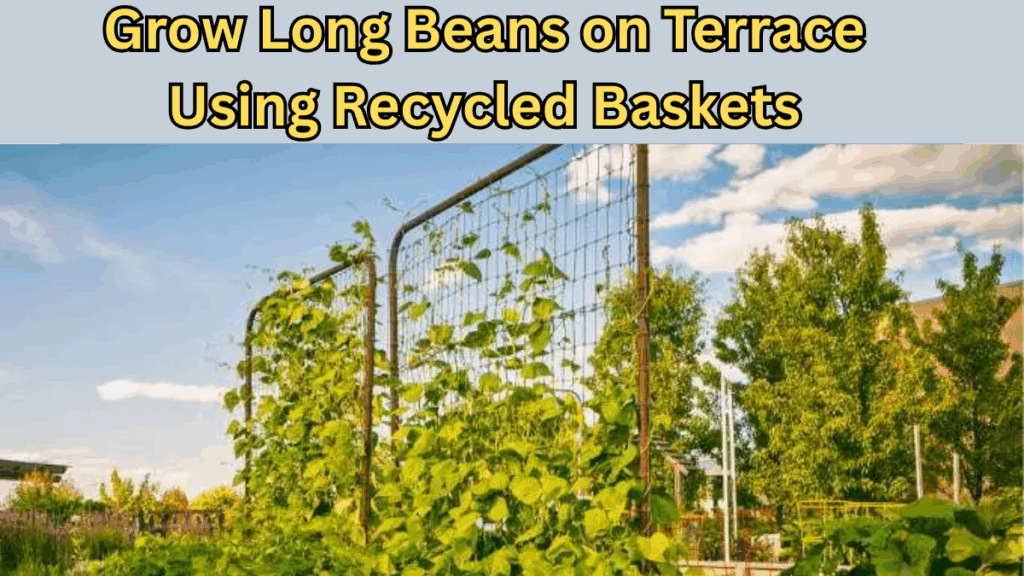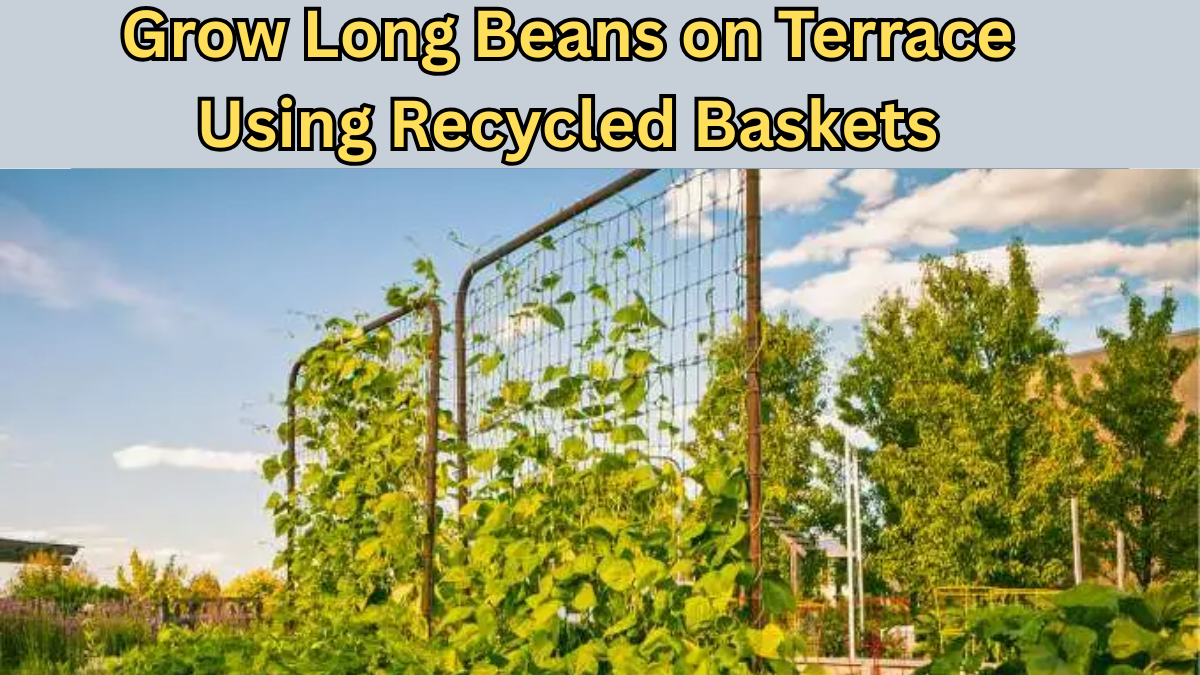Growing your own food at home isn’t just a trend—it’s a rewarding way to live sustainably. One of the easiest and most space-efficient crops you can grow is long beans. If you live in an apartment or have limited ground space, cultivating Long Beans in Baskets on your terrace is a great way to enjoy a homegrown harvest while being eco-friendly.
Let’s explore how to use recycled baskets, create a sturdy trellis, and make your terrace garden thrive.

Why Choose Long Beans for Terrace Gardening?
Long beans (also known as yardlong beans) are ideal for terrace cultivation because they:
- Grow vertically with minimal space.
- Thrive in warm, sunny environments.
- Provide a steady yield throughout the season.
- Add a touch of green beauty to your home.
They’re also perfect for urban gardeners who want a low-maintenance yet productive plant.
Materials You’ll Need
To get started with growing Long Beans in Baskets, you’ll need a few basic items—most of which can be recycled or easily found at home.
| Item | Purpose | Suggested Alternative |
|---|---|---|
| Recycled basket | Acts as the growing pot | Old laundry or fruit basket |
| Potting mix | Provides nutrients for growth | Mix of soil, compost, and coco peat |
| Seeds | The main crop | Yardlong or pole bean seeds |
| Trellis | Supports climbing vines | Bamboo sticks, wires, or rope |
| Watering can | Keeps soil moist | Recycled plastic bottle |
Step-by-Step Guide to Growing Long Beans in Baskets
1. Prepare the Basket
- Choose a recycled basket with good drainage.
- Line it with a piece of jute or coconut husk to hold the soil.
- Fill it with nutrient-rich potting mix.
2. Sow the Seeds
- Plant 2–3 long bean seeds about 1 inch deep.
- Maintain a 4–6 inch spacing between seeds if using a large basket.
- Water gently after sowing.
3. Install the Trellis
Long beans need support to climb.
- Fix a trellis made of bamboo sticks or wire mesh right beside the basket.
- Train the vines to climb as they grow taller.
- This setup ensures better air circulation and sunlight exposure.
4. Watering and Care
- Keep the soil moist but not soggy.
- Water early in the morning or late evening.
- Add compost or organic fertilizer every 2 weeks for strong growth.
5. Harvesting
- Long beans are ready for harvest within 45–50 days of planting.
- Pick them when pods are young and tender for the best flavor.
- Continuous picking encourages more growth.
Benefits of Growing Long Beans in Recycled Baskets
| Benefits | Description |
|---|---|
| Eco-friendly | You reduce waste by reusing old materials. |
| Space-saving | Perfect for compact terrace spaces. |
| Cost-effective | No need to buy expensive pots or containers. |
| Aesthetic appeal | Adds a rustic, green charm to your home. |
Using recycled baskets not only promotes sustainability but also adds a creative touch to your terrace garden setup.
Pro Tips for a Healthy Long Bean Harvest
- Ensure the trellis is strong enough to support heavy vines.
- Avoid overwatering—roots can rot in soggy soil.
- Regularly prune dried or diseased leaves.
- Place your baskets where they receive at least 6 hours of sunlight daily.
- Rotate crops seasonally to maintain soil fertility.
FAQs on Growing Long Beans in Recycled Baskets
Q1. Can I grow Long Beans in Baskets indoors?
Yes, but ensure the basket receives sufficient sunlight—at least 5–6 hours a day. You can also use grow lights if natural light is limited.
Q2. How often should I water the plants?
Water every alternate day during hot months. Reduce watering during rainy seasons or when soil remains moist.
Q3. Do I need to change the soil every season?
It’s best to refresh the soil by mixing new compost before each planting cycle. This keeps nutrients balanced.
Q4. Can I reuse the same recycled basket next season?
Absolutely. Clean the basket thoroughly, repair any damages, and it’s ready for the next batch of Long Beans in Baskets.
Final Thoughts
Growing Long Beans in Baskets using recycled baskets on your terrace is a fulfilling way to reconnect with nature and enjoy fresh, organic vegetables right at home. With a bit of care, a sturdy trellis, and regular watering, your small terrace can turn into a thriving green corner that’s both beautiful and sustainable.
Click here to learn more
